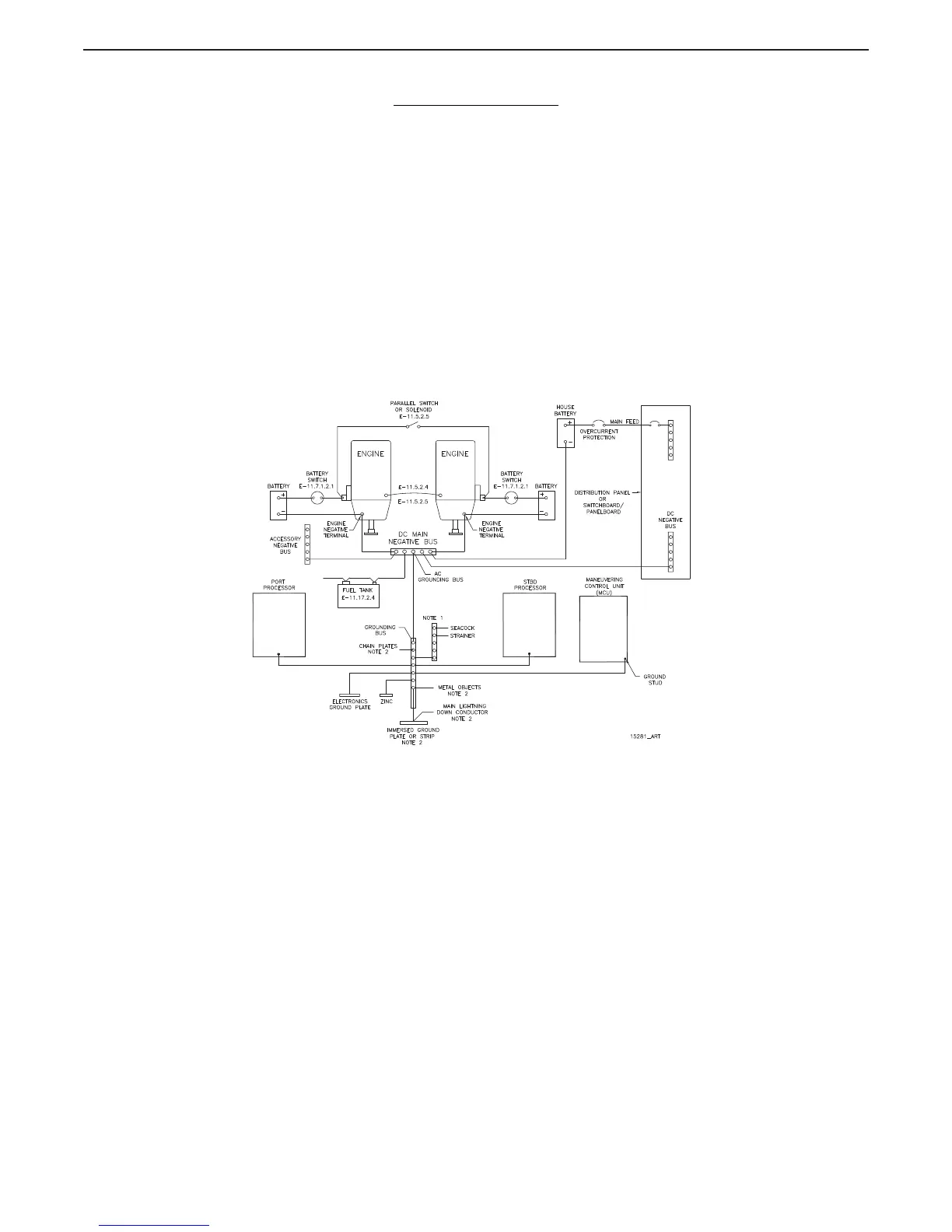Grounding (Bonding)
Grounding (Bonding) - 46 CFR 111.05 and ABYC Section E-11: July 2012
Grounding (Bonding) should be done according to ABYC Section E-11 and Code of Federal Regulations 46
CFR 111.05.
Each grounded system must have only one point of connection to ground regardless of the number of
power sources operating in parallel in the system.
A vessel's hull must not carry current as a conductor. A metallic hull, or the bonding and DC
grounding systems, shall not be used as a return conductor.
There are some limited exceptions: (1) Impressed current cathodic protection systems. (2) Limited
and locally grounded systems, such as a battery system for engine starting that has a one-wire system
and the ground lead connected to the engine. (3) Insulation level monitoring devices if the circulation
current does not exceed 30 milliamperes under the most unfavorable conditions. (4) Welding systems
with hull return except vessels subject to 46 CFR Subchapter D.
Grounding conductors should be identified via a green or green with a yellow stripe jacket, and shall not be
used as a return. Where grounding conductors are attached to Processors or other CE marked devices – a
tinned copper braid is the preferred grounding method - per References: CFR Sec. 111.05-11, Sec. 111.05-13
and
ABYC E-11 sect. 11.4.
a
Grounding diagram is used courtesy of American Boat and Yacht Council.
All parts of figure except processors and processor connection ©
2003 American Boat and Yacht Council
Metal - Hull Vessels
The hull of a metal hull vessel may serve as the common grounding conductor. If it is desirable for the item
being installed to be bonded to the vessel grounding system, and the installation or mounting method does
not provide the desired path, a separate grounding conductor may be required.

